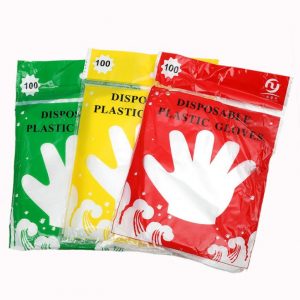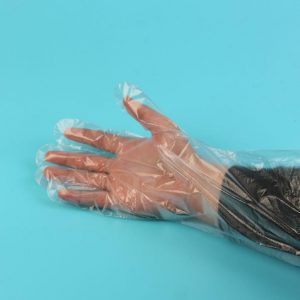Nitrile gloves are a type of disposable hand protection commonly used in various industries, including healthcare, laboratories, food handling, automotive, and more. They are known for their excellent chemical resistance, puncture resistance, and overall durability. This comprehensive guide will cover various aspects of nitrile gloves, including their features, uses, benefits, limitations, and proper disposal:
1. Material and Manufacturing: Nitrile gloves are made from synthetic rubber known as nitrile butadiene rubber (NBR). The manufacturing process involves the polymerization of nitrile rubber, which results in gloves that are strong, flexible, and resistant to a wide range of chemicals.
2. Features and Advantages:
- Chemical Resistance: Nitrile gloves offer superior resistance to a variety of chemicals, including oils, greases, solvents, and certain acids.
- Puncture Resistance: They are less prone to punctures compared to latex gloves, making them a safer option when handling sharp objects.
- Allergy-friendly: Nitrile gloves are an excellent alternative for individuals with latex allergies, as they are latex-free.
- Comfortable Fit: They provide a comfortable fit due to their elasticity, and they conform to the shape of the hand, reducing hand fatigue during prolonged use.
- Tactile Sensitivity: Nitrile gloves offer good tactile sensitivity, allowing users to perform delicate tasks with ease.
- Powder-free Options: Powder-free nitrile gloves are available to avoid powder-related complications in sensitive environments.
3. Limitations:
- Cost: Nitrile gloves are generally more expensive than latex gloves.
- Biodegradability: Nitrile gloves are not as biodegradable as latex gloves, contributing to environmental concerns.
- Not Heat Resistant: Nitrile gloves may not be suitable for high-temperature applications, as they have a lower heat resistance compared to some other materials.
4. Uses and Applications: Nitrile gloves find extensive applications in various industries and sectors, including:
- Medical and Healthcare: Nitrile gloves are commonly used in hospitals, clinics, and medical facilities due to their superior barrier protection and resistance to bloodborne pathogens.
- Laboratories: Nitrile gloves are widely used in research laboratories, where chemical resistance and protection against potential hazards are crucial.
- Food Handling: They are used in food processing and handling to ensure food safety and to prevent contamination.
- Automotive Industry: Nitrile gloves are used in automotive applications to protect hands from oils, lubricants, and other chemicals.
5. Proper Use and Disposal:
- Size Selection: Nitrile gloves come in various sizes, so it’s essential to choose the right size for a comfortable and secure fit.
- Donning and Doffing: Proper techniques for donning (putting on) and doffing (taking off) gloves should be followed to avoid contamination.
- Single-use Only: Nitrile gloves are designed for single-use only and should not be reused.
- Disposal: Used nitrile gloves should be disposed of properly according to local waste disposal regulations. They should not be recycled or disposed of with regular trash.
6. Selecting the Right Nitrile Gloves:
- Consider the intended use and application.
- Look for gloves with appropriate thickness and texture for the required tasks.
- Check for FDA approval if used in the medical or food industry.
- Choose between powdered or powder-free gloves, depending on user preferences and requirements.
In conclusion, nitrile gloves are a versatile and effective hand protection option with numerous advantages. When used and disposed of correctly, they help maintain a safe and hygienic environment in various industries. Always follow proper guidelines for use and disposal to maximize their benefits and minimize potential risks.
















